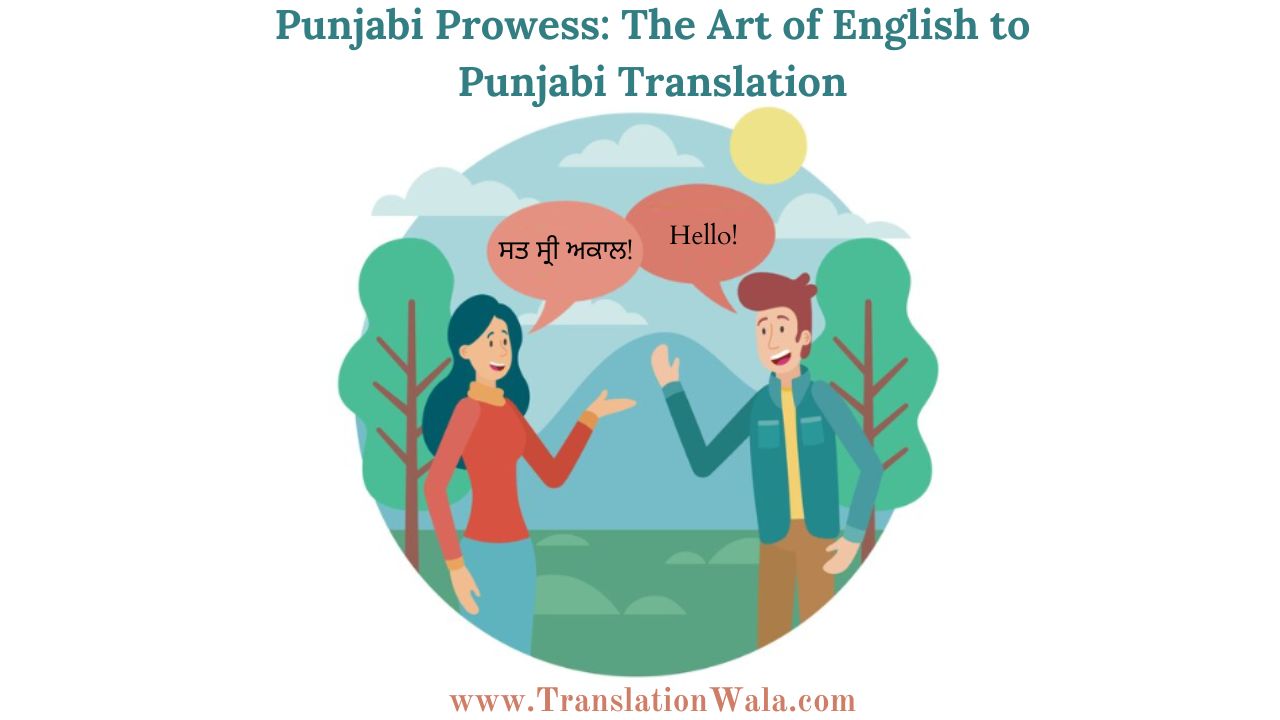Over 130 million people speak Punjabi around the world. It has a rich literature history and a strong cultural impact. However, English to Punjabi Translation can be tricky because of the need for truth, subtlety, and cultural context. This piece goes into great detail about how this process works and what problems and successes translators face as they work to connect these two different languages.
The Challenge: Bridging Linguistic Divides
One big problem with English to Punjabi Translation is that the two languages are not exactly the same. English is a Germanic language, so it depends a lot on prepositions and word conjugations to say what it means. Punjabi, on the other hand, is an Indo-Aryan language with a better way of conjugating verbs and a method for postpositions. It can be hard to get the exact meaning and flow of a sentence across in a translated text because of this basic difference.
Take the line “The meeting is tomorrow at 10 a.m.” because an example. In English, the word “at” makes it clear what time the meeting is. Punjabi, on the other hand, uses postpositions. This sentence could be translated as “ਮੀਟਿੰਗ ਕੱਲ੍ਹ ਸਵੇਰੇ 10 ਵਜੇ ਹੋਵੇਗੀ” (Meeting kalhh savere 10 vaje hovegi), where “ਕੱਲ੍ਹ” (kalhh) means “tomorrow,” “ਸਵੇਰੇ” (savere) means “morning,” and “10 ਵਜੇ” (10 vaje) literally translates to “10 o’clock.” This method correctly communicates the idea while following Punjabi language rules.
The Nuance of Cultural Context
Cultural background is very important for good translation. Words and phrases used in English often don’t have clear translations in Punjabi. To make sure that the information gets across to people in Punjabi, a good speaker needs to know a lot about both countries.
For example, changing the English phrase “kick the bucket” into another language might not give the right impression of death. A Punjabi translator might choose a saying that fits the culture, such as “ਬੱਲਦ ਚਾ ਗਿਆ” (bullock has unyoked itself), which means the same thing in Punjabi but is more appropriate for that culture.
In the same way, humor often depends on cultural references that get lost when they are translated. A translation might have to change a joke or pun so that it works for people who speak Punjabi. This could mean switching out the original reference for a Punjabi one that makes people laugh in the same way.
Also Read: Telugu Bound: The Beauty of English to Telugu Translation
Mastering the Register: Formal to Informal
There is also the issue of record, which goes beyond language and cultural barriers. How you write official English writing is different from how you talk informally. Punjabi has a similar range, with formal words like “ਆਦਰਸ਼ਕ ਪੰਜਾਬੀ” (Aadarsh Punjabi) used in official documents to the more colloquial “ਲਹਿਜਾ” (Lehja) used in everyday conversation. A good translator will be able to spot these differences and make the necessary changes to the translation.
For example, an official Punjabi register would be needed to translate a business contract. On the other hand, a more casual and artistic method might be needed to translate song lyrics while still capturing the spirit of the original work.
Strategies for Success: The Translator’s Toolkit
Professional English to Punjabi Translation use a variety of methods to make sure that their work is correct and respectful of other cultures. This is a key way to do things:
- Understanding the Source Text: It is very important to carefully look over the source English text. Before starting to translate, the translator needs to know who the text is for, what it means, and how it sounds. This first step lays the groundwork for a good translation.
- Glossary Building: Making a full list of specialized words and phrases that are used over and over can speed up the process and make sure that the translation is consistent. This is very helpful for expert papers that use a lot of specific language.
- Leveraging Technology: Machine translation tools are useful for getting started, but they should never be used instead of human knowledge. A good translator only uses these tools to help them be more productive by offering possible versions. They don’t use them instead of their own opinion and knowledge of cultural differences.
- Back Translation: By translating the Punjabi text back into English, the translator can find any mistakes or places where the work needs to be improved. This step is a quality check to make sure that the translated text matches the original meaning exactly.
The Rewards of Punjabi Prowess
It’s not enough to just find words that mean the same thing when English to Punjabi Translation. It means keeping the main ideas of the original writing and making sure they make sense to the intended readers. When translators get good at this, they get a lot of benefits:
- Bridging Cultural Gaps: Translations that work well can help people who speak English and Punjabi talk to each other and understand each other better. They are very important for encouraging cultural exchange and teamwork, which leads to a more interesting sharing of ideas and points of view.
- Preserving Punjabi Language: Translations that are correct help the Punjabi language stay alive and grow. Translators help the language grow and change in a global setting by making sure it is used in many areas, from writing to science.
